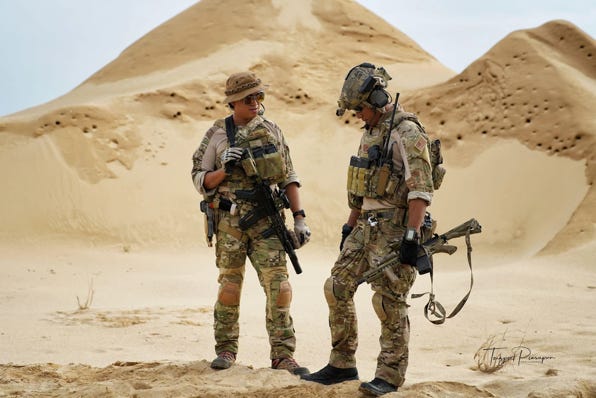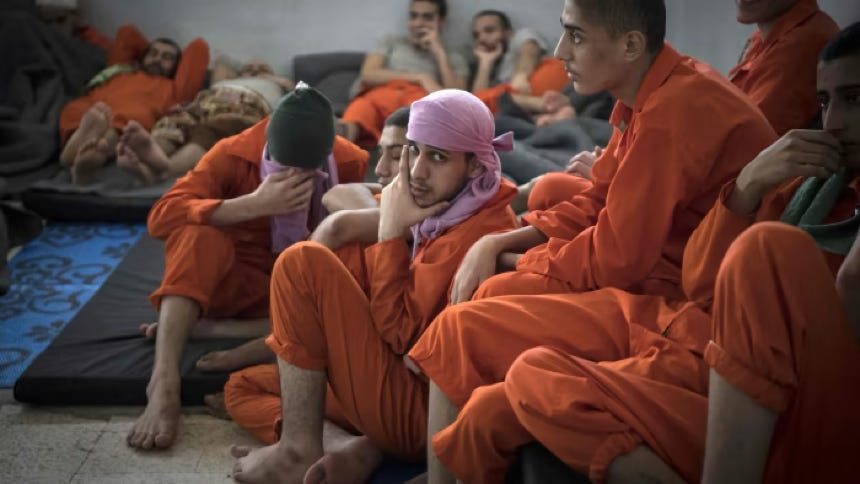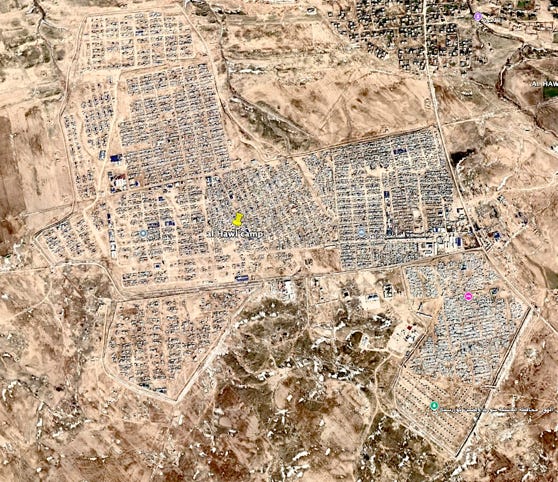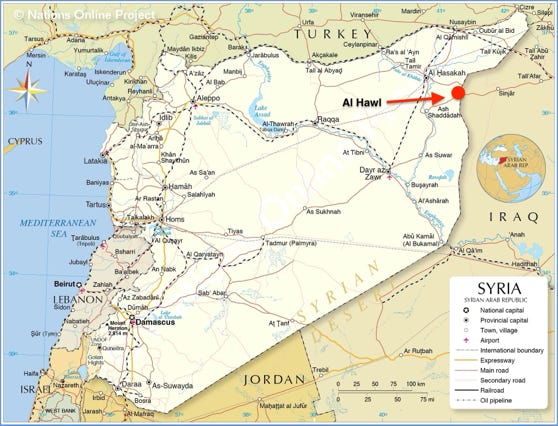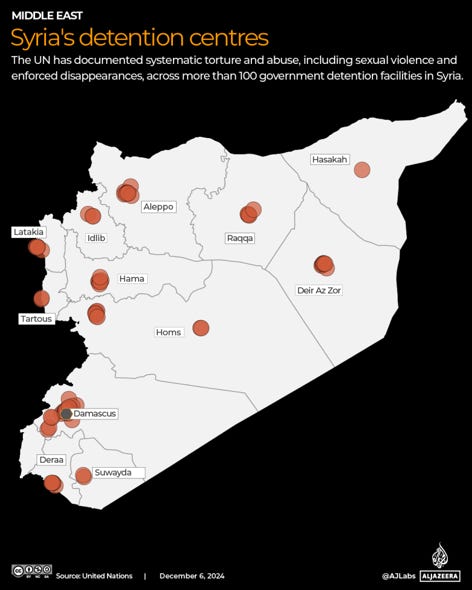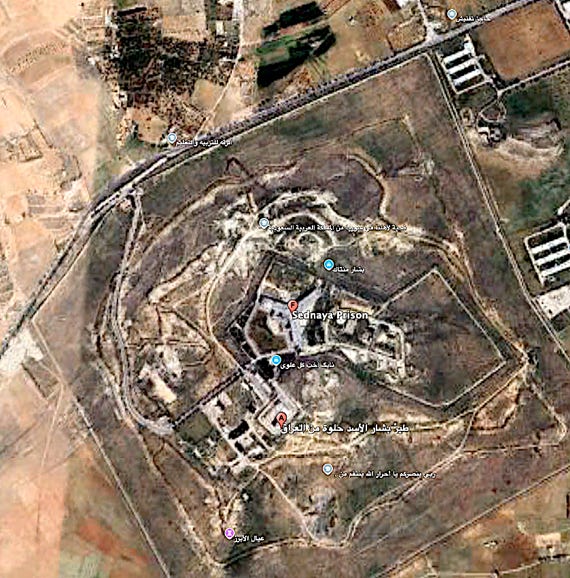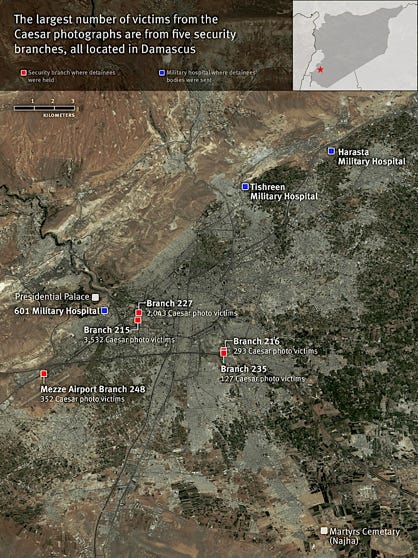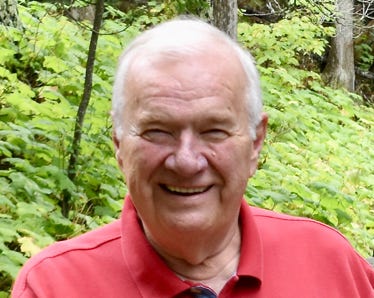DUTY, HONOR, COURAGE, RESILIANCE
Talking Proud: Service & Sacrifice
Syria: A fractured state
Venture into the unfamiliar
Photo credit Fadel Senna/AFP/Getty, FT
The prisons and prisoners
I confess to being dumbfounded by the enormous challenges posed by SDF prisons and the tens of thousands of IS fighters and their families, children included, in those prisons. To make a displeasing situation worse, an estimated 100,000 Syrians have died in Syrian government prisons.
In September 2024, CENTCOM issued a press release that quoted General Michael Kurilla, USA, commander CENTCOM, saying, among other things,
“Over 9,000 ISIS detainees remain in over 20 SDF detention facilities in Syria, a literal and figurative ‘ISIS Army’ in detention. If a large number of these ISIS fighters escaped, it would pose an extreme danger to the region and beyond. We will continue to work with the international community to repatriate these ISIS fighters to their countries of origin for final adjudication.”
I see this as a staggering issue. Other credible sources argue that General Kurilla’s numbers are far too low. The International Crisis Group reported in July 2022 that 27 SDF-run prisons were holding an estimated 10,000 Syrian and foreign IS fighters, “two detention camps and two child rehabilitation centres, which hold over 60,000 people, including wives (or widows) and children of ISIS fighters.” In 2020, the UN said 65,000.
Henri Barkey of the Council on Foreign Relations reported in January 2025 that as of March 2024, al Hawl held more than forty thousand prisoners and their families.
Al Hawl is an “open-air prison for ISIS supporters and victims.” In 2022, General Kurilla called the Al-Hawl camp a “flashpoint of human suffering.” I ask myself, “Who in the hell is going to solve this problem?” The UN High Commission for Refugees seems to have “the deck and the con.” However, one cannot rely on the UN. In my view, the challenges remain.
Al Hawl is about 26 miles southeast of Hasaka and 10 miles west of the Iraqi border. Many refer to it as a refugee camp. It is not San Quentin, but it is fenced.
It holds many who fled the Iraq wars. But the lion’s share seems to have come from the Euphrates River Valley as the result of IS taking control of that region and the US-SDF offensives taking it all back.
In March 2023, Charles Lister of the Middle East Institute said having “more than 25,000 children at al Hawl was a humanitarian travesty and ticking time bomb.” At one point in 2023, SDF captured 300 IS operatives living among the families and hiding weapons and explosives. Furthermore, the SDF discovered several “IS schools” and videos teaching IS ideology and support of violence and terror. He opined there were 50,000 women and children at al Hawl.
Furthermore, the SDF guards often were so afraid to enter the camp that they would only do so in US-provided Bearcat armored vehicles and, on occasion, Lister said they were “flanked by multiple teams of U.S. special forces, American-operated Bradley fighting vehicles … at every corner and U.S. drones and helicopters … in the sky above.” He underscored, “Prison breaks are part of ISIS’s DNA. They were the key to its dramatic resurgence in 2014.”
IS launched a significant attack on Ghweiran Prison (Al Sina) in Hasaka that caused a 10-day battle that required US and British Special Forces to quell. An estimated 500 people were killed. Some 45,000 residents of Hasaka were displaced during the battle. The US had to launch air attacks.
Lister hit the nail on the head in my book, writing, “ISIS literally has an army in prisons.” He said,
“The only resolution to this detainee crisis is returning the men, women and children to their countries of origin for prosecution or rehabilitation and reintegration. Logistically, the challenge here is daunting. If the situation remains the same, it will take at least 30 years to return the women and children alone.”
The problem is that the countries of origin do not want these people back. The “new sheriff in Damascus,” the HTS, knows it cannot manage the prisons. Some have suggested that the prisoners be merged into the Syrian armed forces.
This is a map provided by Aljazeera showing the principal prisons in Syria. What to do with the prisoners and their families remains unresolved.
Now that Assad is gone, one must also face the barbaric system of prisons run by his government and the matter of dealing with its prisoners. The HTS has opened many of them and released an untold number of prisoners. The search for escaped prison staff is now underway.
The Sednaya Prison north of Damascus is shown in thie Google Earth image. Amnesty International has called it the “human slaughterhouse.” Leila Molana-Allen has called it a black hole of pain and abuse.
Assad’s regime rounded up prisoners during the civil war, and Amnesty has judged that 5,000 to 13,000 civilians were executed at the prison between 2011 and 2015 with no reason to believe it has stopped. Torture, deprivation, and execution were the prison styles employed.
A Syrian military police defector codenamed “Caesar” smuggled over 6,000 photos of corpses in Syrian government detention facilities in Damascus, places such as Branch 215, 216, 227, 235, and 248, shown in this Human Rights Watch image.
These are known as the Casear Photos. This image highlights the five detention facilities where the most significant Caesar Photos were taken. Nadim Houry of Human Rights Watch has said, “We have no doubt that the people shown in the Caesar photographs were starved, beaten, and tortured in a systematic way, and on a massive scale,” and commented that this was just a fraction of those who died in Syrian captivity.
Military Intelligence Detention Center Branch 215, for example, tortured and killed detainees and sent their corpses to a military hospital nearby, after which they were moved to mass graves. In Syria, to be imprisoned was to disappear. People were detained, imprisoned, and held incommunicado, perhaps tens of thousands, many without explanation. The International Center for Transitional Justice has said,
“During the past nine years of conflict, Syrian government forces and affiliated militias have arbitrarily or unlawfully detained approximately 100,000 individuals in official and makeshift detention centers without due process, access to legal representation, or contact with their family.”
In December 2024, CNN reported that the Syrian Observatory for Human Rights estimated that 100,000 people died in Syrian prisons.
France has issued an arrest warrant for Bashar al-Assad for crimes against humanity. The International Criminal Court (ICC) is expected to follow suit. He is currently in Russia.
Click to zoom graphic-photo
